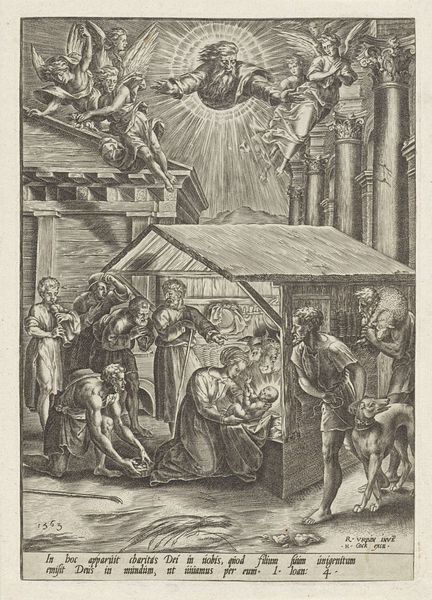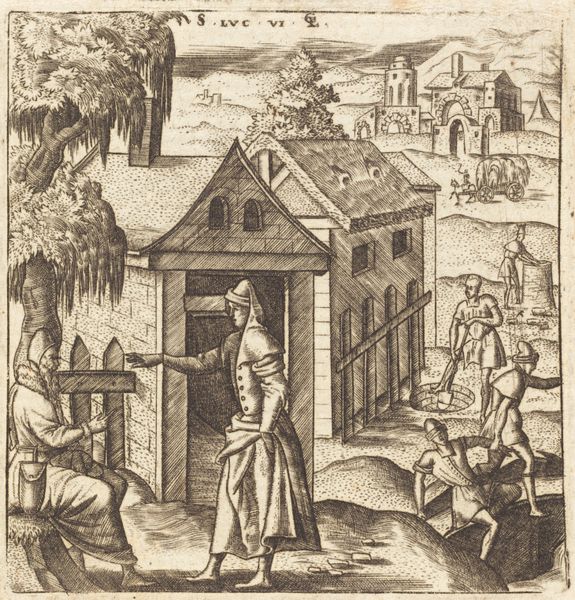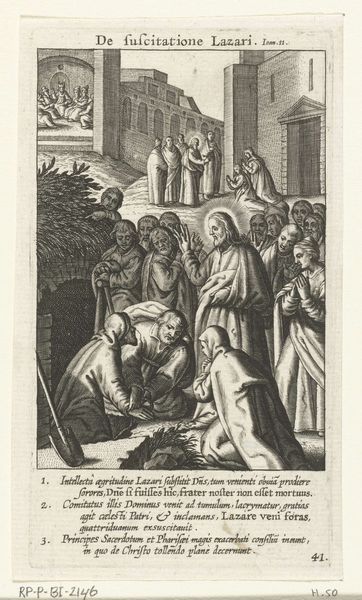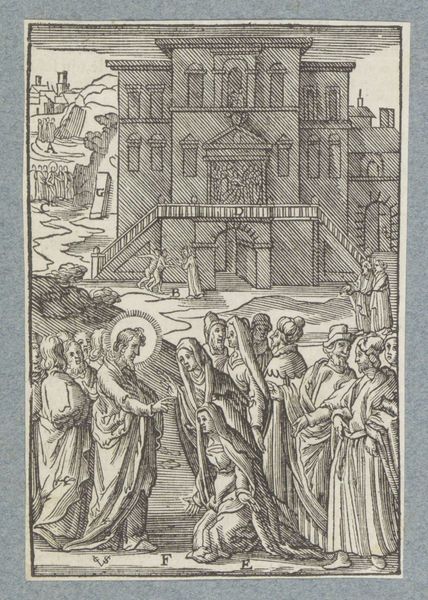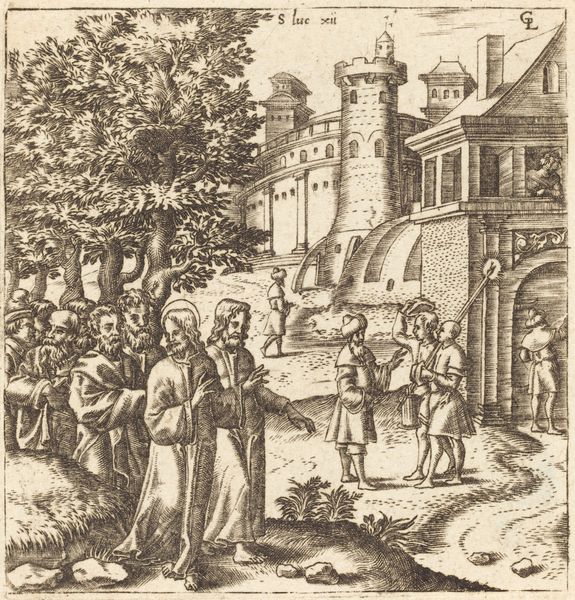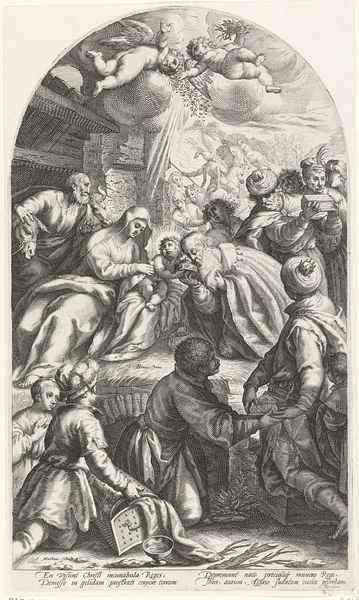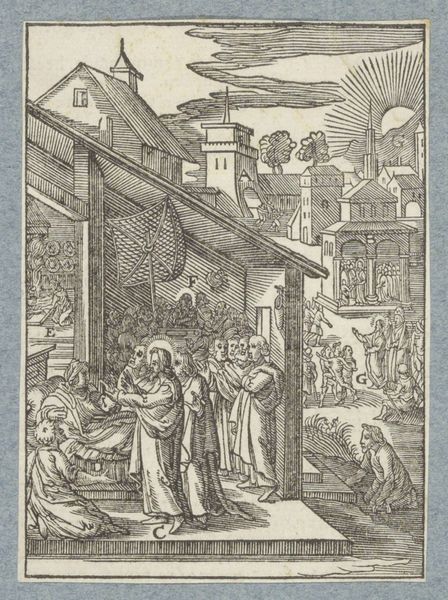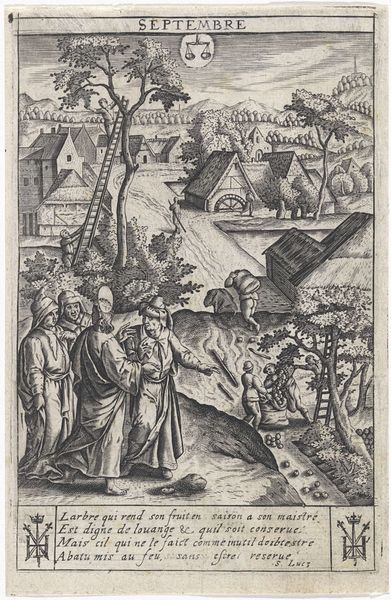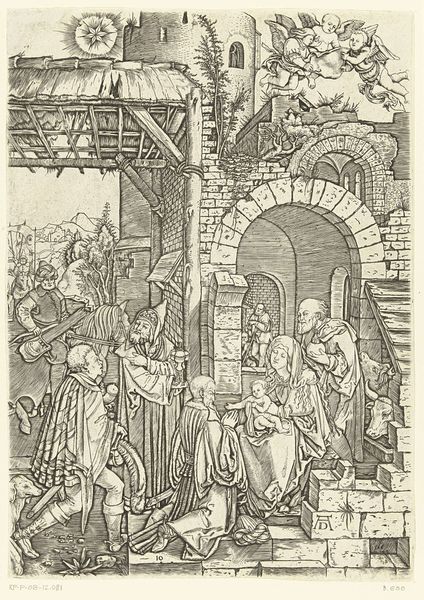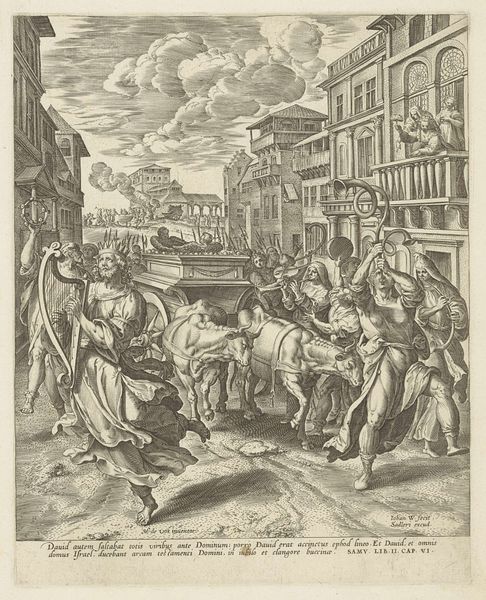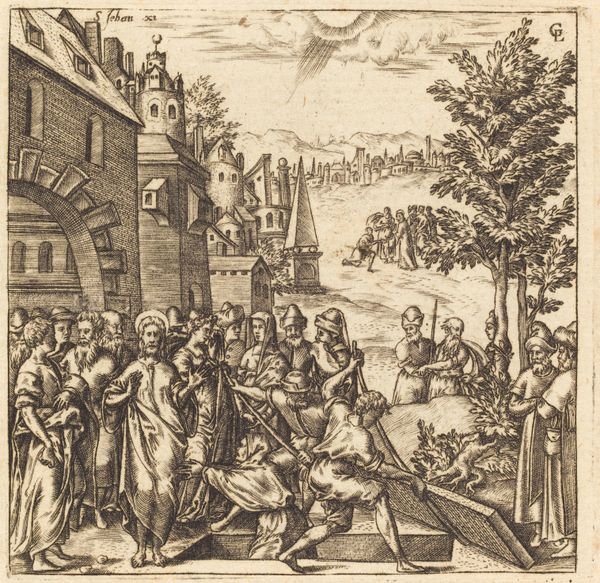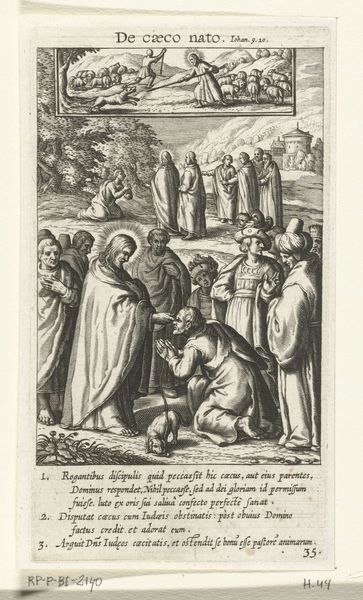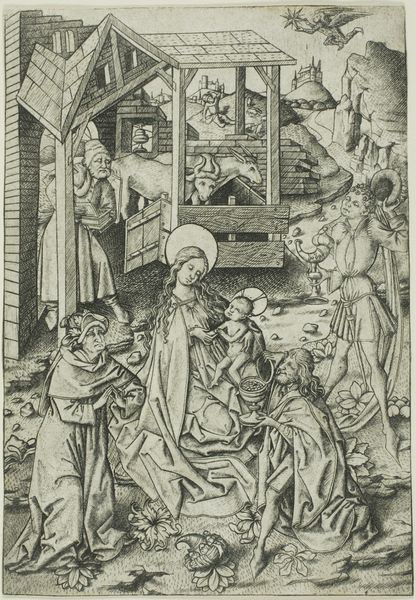
drawing, print, engraving
#
drawing
#
narrative-art
# print
#
figuration
#
11_renaissance
#
line
#
history-painting
#
northern-renaissance
#
engraving
Dimensions: height 232 mm, width 146 mm
Copyright: Rijks Museum: Open Domain
Editor: So, this is "The Healing of Peter’s Mother-in-Law," an engraving by Wierix, dated 1593. I find the composition quite interesting, almost theatrical with the stage-like setting. How do you interpret this work, given its historical context? Curator: It's essential to consider the role of religious imagery in the late 16th century. Prints like these weren't simply devotional objects; they played a vital role in disseminating religious narratives within society, often during periods of intense religious and political upheaval. How do you think Wierix is positioning the power dynamic here? Editor: Well, Jesus is very much at the center, literally and figuratively, performing a healing miracle. Is it intended as a kind of propaganda? Curator: Exactly. The imagery reinforces the authority of the Church and divine power. Think about the socio-political landscape then. The Reformation was challenging established religious norms. Prints like these served as visual tools to reaffirm Catholic doctrine and demonstrate divine intervention in everyday life. Note how the artist depicts the architectural setting to add context. Do you find this relates to the religious content? Editor: Definitely. The setting seems to elevate the event, lending a sense of established authority and legitimacy to the miracle and, by extension, the Church. The city even feels idealised, rather than realistic. Curator: Precisely. Understanding the socio-political context really unlocks a deeper understanding of the artist's purpose. Consider where this would have been viewed, who had access, and the agenda they sought to perpetuate through mass consumption. Editor: I never thought about these religious scenes as such active instruments in a larger power struggle. It is eye-opening. Curator: Right. Analyzing art involves more than aesthetics; it demands situating artworks within the complex web of history.
Comments
No comments
Be the first to comment and join the conversation on the ultimate creative platform.
